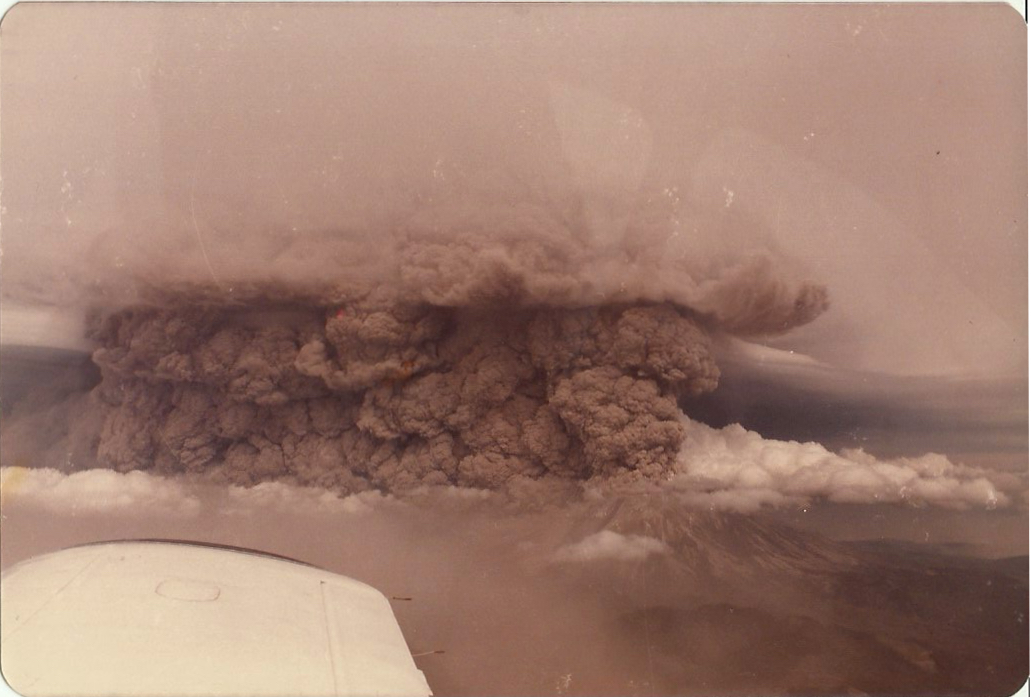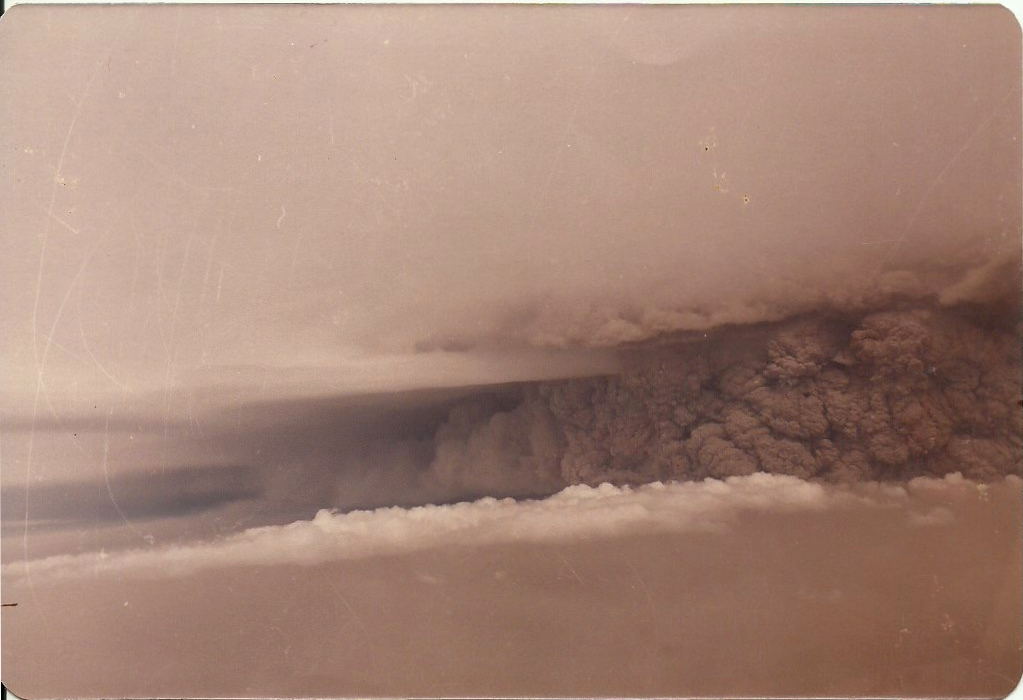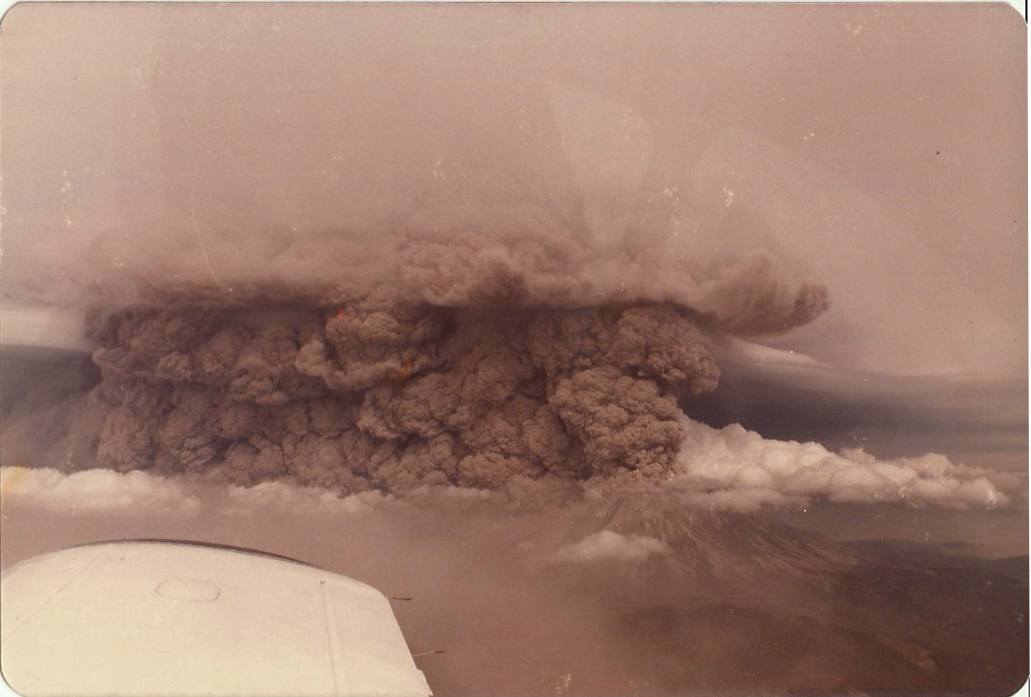Editor’s note: The KOIN 6 Weather team is presenting weather and science lessons to help serve our teachers and students. Click here for more lessons.
PORTLAND, Ore. (KOIN) – There’s a good chance you missed the natural disaster known as the eruption of Mount St. Helens. It was 40 years ago on Monday.
I was there but way too young to remember. You will notice I have posted photos my mom took from our airplane that day. I’m the toddler looking out the window.
So now what? Is Mount St. Helens going to erupt again? What about Mount Hood? Why are some volcanoes considered active while others are dormant?
To answer all of these questions I interviewed Seth Moran, seismologist and scientist in charge at the Cascades Volcano Observatory. Click on the videos below to listen to Seth explain volcanoes and what happened the day Mount St. Helens erupted.
Moran says that many of the in-person activities planned by the USGS to mark the 40th anniversary of Mount St. Helens’ eruption were waylaid by the ongoing coronavirus pandemic. In fact, one of the gatherings expected to take place this year was a reunion of people who were there 40 years ago, from forest service members, to logging company crews and other survivors. This particular reunion has been postponed to 2021.
Instead, there’s an emphasis on connecting virtually this year, which is how scientists are currently conducting their research.
“In this day and age, we’re fortunate that most of the monitoring that needs to be done can be done remotely,” he said, adding that scientists have curtailed some of their in-person work. “We’re also getting ready to start getting back into fieldwork as long as we can do it safely.”
The seismologist says another eruption like the 1980 one is unlikely in our lifetime for Mount St. Helens, because of the now iconic “catastrophic landslide.”
“If that landslide hadn’t happened, the magma, some of it would certainly erupted, but it probably wouldn’t have been nearly as large,” Moran said. “And so it was really the landslide that made the initial events of May 18th so catastrophic and now there’s not as much volcano to fall apart. And so the likelihood of having something that gets so pressurized and go off is certainly reduced.”
However, while the likelihood of another cataclysmic event such as the May 18, 1980 eruption is low as the volcano rebuilds itself, Moran isn’t entirely ruling out all activity.
“Mount St. Helens is the most frequently active volcano in the Cascades,” he said, adding magma is likely slowly building up “in small amounts at relatively deep levels.”
Mount St. Helens also happens to be one of the best monitored volcanoes in the region. By using the latest technology to develop a monitoring network, geologists, including seismologists such as Moran, are able to track barely perceptable changes on the surface of the mountain, which gives scientists and idea of what’s happening below their feet.
Moran also says he and other geologists use the geologic record to inform their understanding of Mount St. Helens’ future — and the future of other volcanoes in the Cascade Range — since it’s “the best guide.” In fact, Mount St. Helens has been somewhat steady in erupting over the last 4,000 years, according to Moran.
“Mount Hood, on the other hand, has been a lot spottier. It had an eruption in 1781 that lasted for about a decade before,” he said. “Before that, you have to go a long ways back to the last eruption, almost 10,000 years. The eruption record doesn’t support [Mount Hood] as likely to erupt as Mount St. Helens.”
However, scientists, including seismologists, aren’t letting their guard down, and treat all Cascade volcanoes as potentially ready to erupt.
“By being ready, we need to have monitoring instruments out there and also be working with communities to make sure they know what the hazard is and who we are and … what might happen when their volcano does wake up,” Moran explained.
Terms such as “active,” “dormant” and “dead” when used to describe volcanoes can be “a little bit fraught,” according to Moran, since they can be used in multiple ways by different groups. However, geologists tend to focus on the dominant strata volcanoes that could have the potential to erupt in our lifetimes, such as Mount St. Helens, versus cinder cone volcanoes such as Black Butte and Mount Bachelor in Central Oregon.
Forty years ago, when Mount St. Helens woke up, the mountain’s blast zone obliterated vegetation, buildings — any sign of life. Now, 40 years later, nature has transformed some of the scars left by the volcano’s eruption and catastrophic landslide, especially in places such as the Blast Zone Overlook, where there’s hardly any evidence of a blast zone.
“It’s been completely overgrown,” Moran described. “You would have no idea that 40 years ago, all the trees have been cleared out from that point onwards. So it’s really a sign that nature is coming back in a pretty big way throughout much of the blast zone area.”
However, the closer one gets to the volcano, the more apparent the destruction is, especially about four to five miles on the north side of Mount St. Helens.
Moran, who was 13 when the mountain erupted on May 18, 1980, credits the natural disaster for exposing him to science, and his ultimate path of seismology.
“Science is a great way just in general — math as well, ’cause a lot of what we do is just application of the scientific method and being curious and … finding ways to translate that curiosity into a real quantitative way of investigating hypotheses and questions that you might have,” he said.





